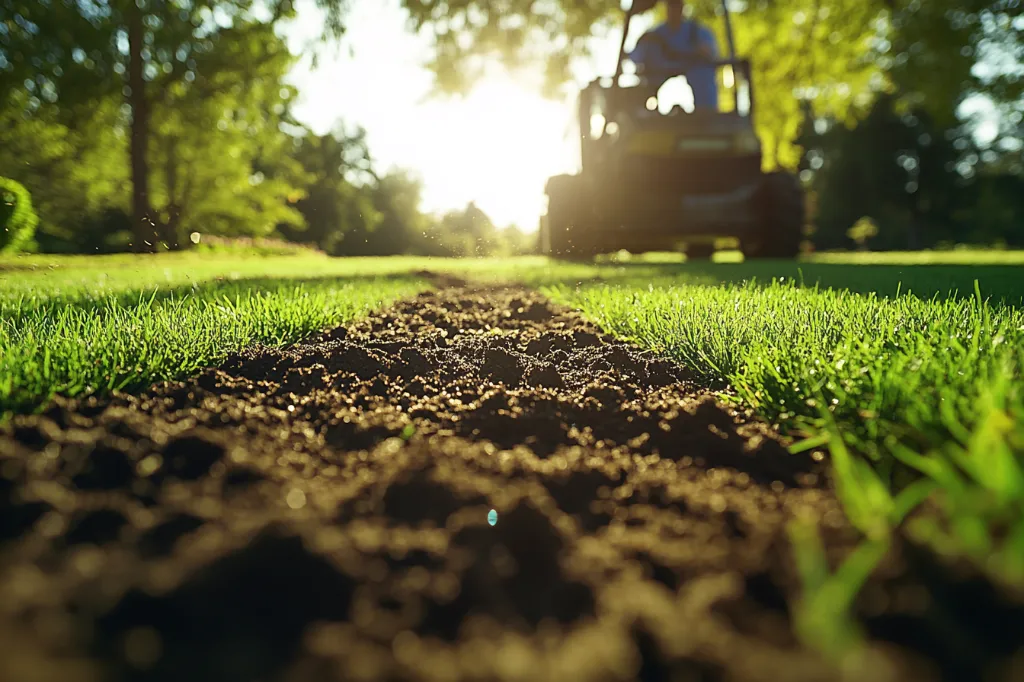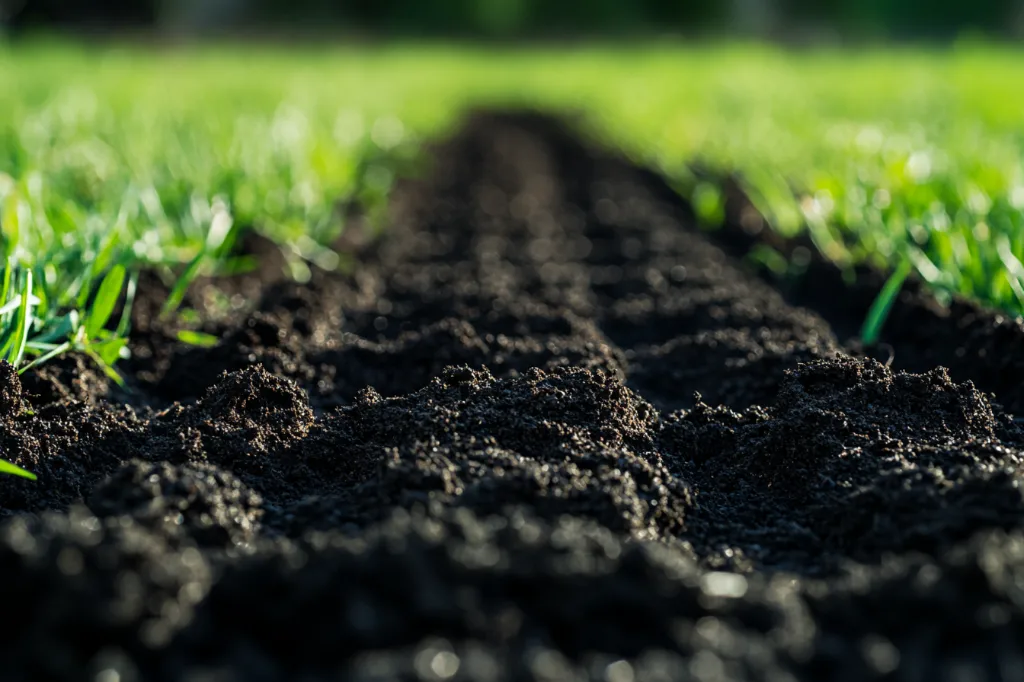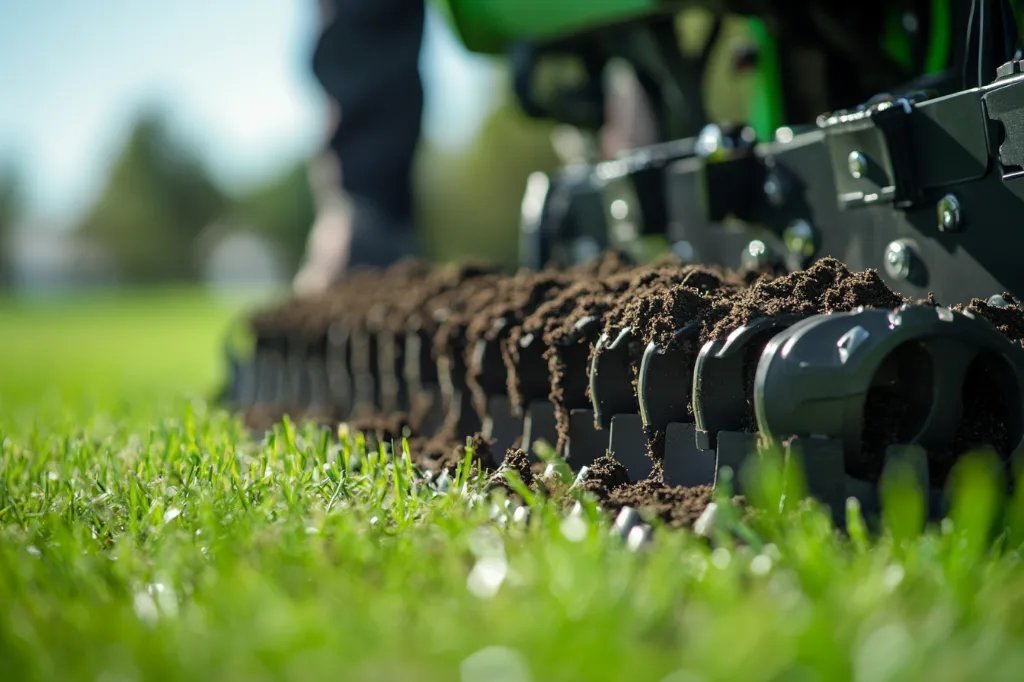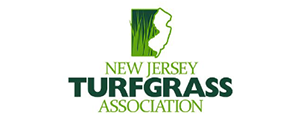Aeration involves perforating the soil with small holes to improve water, air, and nutrient penetration.
Dethatching removes the layer of dead grass and debris that builds up between the soil and the green blades. Together, these tasks prepare your lawn for optimal growth in spring.
Benefits of Aeration
Aeration offers several advantages:
- Improves Soil Structure: Reduces compaction and promotes better root growth.
- Enhances Nutrient Uptake: Allows fertilizers and water to penetrate deeply.
- Boosts Water Infiltration: Reduces runoff and encourages even moisture distribution.
- Supports Healthy Growth: Creates an environment for a thicker, more resilient lawn.
Aeration Methods
There are two common methods to aerate lawn:
Method | Description |
Core Aeration | Removes small plugs of soil, allowing air and nutrients to reach the roots. |
Spike Aeration | Uses spikes to poke holes into the soil, less effective in reducing compaction. |
Core aeration is generally preferred because it creates space for new growth and enhances overall soil health.

Benefits of Dethatching
Dethatching removes the buildup of organic material that can choke your lawn. Key benefits include:
- Improved Airflow: Reduces the barrier that prevents oxygen from reaching the roots.
- Better Moisture Absorption: Helps water and nutrients reach the soil effectively.
- Prevents Disease: Eliminates excess thatch that can harbor pests and diseases.
- Enhanced Lawn Appearance: Promotes a neat, uniform look by removing dead material.
Dethatching Methods
When it comes to dethatch lawn, you have a few options:
- Manual Raking: Suitable for small lawns with light thatch buildup.
- Power Raking: Uses a dethatching machine to remove thicker layers of thatch.
- Vertical Mowers: Can help break up the thatch while mowing, especially on larger areas.
Choose a method that suits your lawn size and the amount of thatch present.
When to Aerate and Dethatch
The ideal time for these tasks is during early spring when your lawn starts to grow actively. Ensure that:
- Soil Moisture is Optimal: Aerate when the soil is slightly moist for best results.
- Grass is Actively Growing: This helps your lawn recover quickly after dethatching.
- Weather Conditions are Mild: Avoid extremely hot or cold days to reduce stress on your lawn.
Following these timing tips maximizes the benefits of both aeration and dethatching.

Regular aeration and dethatching are vital for lawn aeration spring success.
They enhance nutrient uptake, improve soil structure, and prepare your lawn for vigorous spring growth. Incorporate these steps into your routine for a healthier, more vibrant yard. For a complete guide on seasonal lawn care, check out our Spring Lawn Care Steps for a Lush, Green Lawn.
Frequently Asked Questions
What is aeration and why is it important?
How does dethatching benefit my lawn?
Which aeration method is best?
How often should I dethatch my lawn?
When should I perform aeration and dethatching?
By following these spring lawn care aeration tips, you’ll create the ideal conditions for a lush, healthy lawn that can thrive all season long.



